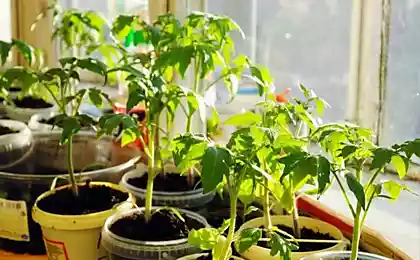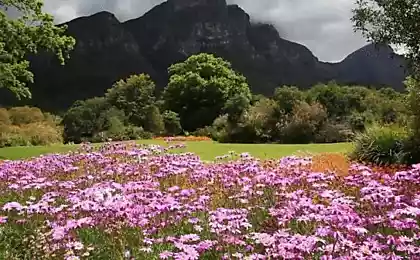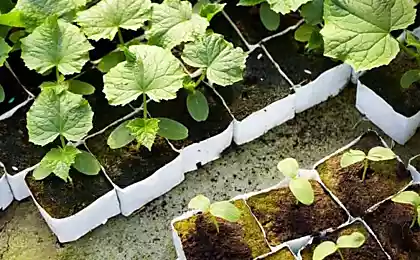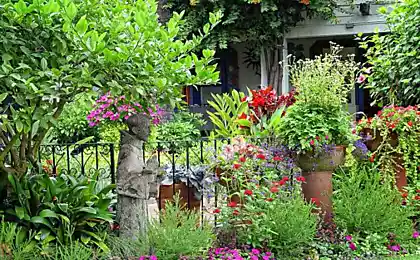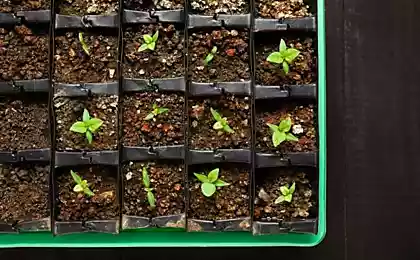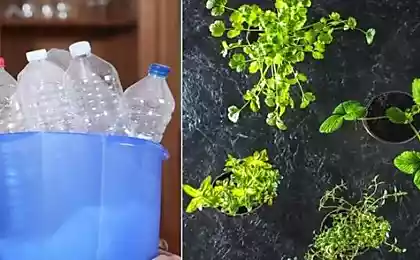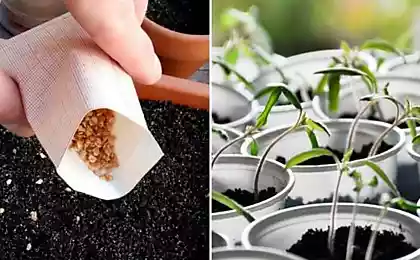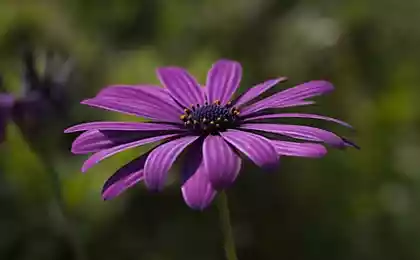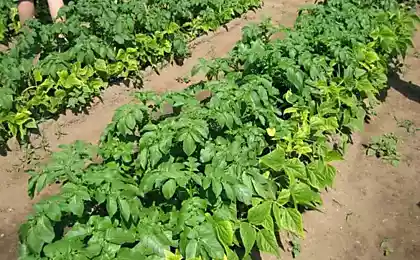309
15 flower crops that need to be sown in April
Recently, we discussed what flowers should be sown for seedlings in March, and today let’s remember what flower crops should be sown for seedlings in April.
One-year beauty, a variety of shapes and colors are the main reasons for the popularity of the one-year astra, also known as callistefus Chinese. In total, there are about 4,000 varieties of these amazing plants belonging to more than 40 different groups. Whatever happens to annual asters: pionoid and chrysanthemoid, needle and pompous, with small and large inflorescences, tall and short. The color of their inflorescences is distinguished by a rich color scheme, and in bouquets, astras not only look great, but also last for a long time.
Annual asters are grassy plants with a powerful, branched urotic root system and rigid, hard stems of green or slightly reddish color. The flowering of annual asters begins from the end of June and lasts as long as October. Small seeds (and 1 gram of them contains about 500) ripen after 35-40 days after the beginning of flowering and retain their germination for 2-3 years.
Reproduction of annual asters, unlike perennial ones, is possible exclusively by seeds. Sowing them on seedlings is carried out in the last days of March or in the first decade of April; sowed in containers with fertile light soil. The soil for growing seedlings of annual asters can be prepared independently, mixing 1 part of sand and peat with 2 parts of sod soil. The seedlings will rise about a week after sowing, and as soon as they have the first real leaf, it is time to dive into separate pots or into a greenhouse (greenhouse). More details about growing an annual aster and the intricacies of sowing it directly into the open ground can be found in this useful article.
Perhaps, once again to tell in detail about the cultivation of velvets does not make sense. We have already talked about the secrets of their planting and the nuances of care, the beauty of velvets was discussed in the posts Velvet flowers Velvetsy and Fairy Velvets, and about the types and varieties is written in the article Velvetsy – beauty and benefits to the very cold.
Velvets breed perfectly by sowing seeds directly into the ground, but... A few years ago, I tried to grow seedlings and was very pleased with the result. The flowers blossomed 15-20 days earlier than usual, moreover, their flowering was very, very lush and long, and the plants themselves grew strong and healthy. That's why I now advise everyone to grow velvet seedlings. Seeds of velvets can be sown in a greenhouse, greenhouse or simply under film - in the garden. In some special care seedlings do not need. Remove the film and plant seedlings of velvets in a permanent place will be closer to the middle of May.
Ageratum Ageratum, nicknamed by the people longflower for the ability to bloom for a long time, is loved by many for this feature. With the help of ageratum, gardeners successfully create bright, beautiful slaves and curbs that bloom for a long time. It is also successfully used for cashpos and hanging boxes.
It impresses not only with a long flowering period, but also with a variety of colors: blue, pink, white, purple and even maroon ageratum flowers are unusually good in garden compositions. In total, there are about 50 species of this plant, mainly growing in the tropics and subtropics, among which there are perennial and annual, dwarf - about 10 cm high - and high - reaching more than half a meter in height. However, only 1 species is mainly cultivated in the Middle Strip - Mexican ageratum or, as it is also called, Houston ageratum. The appearance of this plant is familiar to almost every grower: rough heart-shaped leaves with teeth at the ends and inflorescences-baskets collected in dense or loose shields. Seeds in ageratum are very small - 1 gram of them contains about 5000. That is why this heat-loving plant is propagated by sowing for seedlings in the first half of April. Seeds are sown in boxes or a greenhouse filled with previously prepared moistened soil mixture consisting of equal parts of peat, sand and humus, there is no need to sprinkle them with soil. If the optimum temperature is observed and the soil moisture is ensured, the seeds of ageratum germinate already 10 days after sowing. And as soon as the seedlings have two pairs of leaves, they dive.
Kohia (summer cypress) Incredibly spectacular appearance of cochia (also called summer cypress), made her a favorite of many gardeners. Kohia looks very impressive on any flowerbed, and thanks to it, the composition acquires a new sound. See how beautifully Kohia puts the accents.
And we can also use cochia for topiary, which even a beginner can do. Unusual living figures will decorate the garden to the delight of the owners and surprise the guests. For seedlings, the seeds of cochia are sown until the end of April in containers with universal soil mixture, slightly pressing them into the ground (they need light to germinate). The shoots appear in about 10 days. In detail about growing cochia and caring for it, we have already talked here in this article - if the plant is interested in you, be sure to read.
Aquilegia in Latin means “plant collecting water”. Perhaps that’s why it got its second name – watershed. Gardeners aquilegia loved for the bright flowers of ornate bizarre shape and unusual beauty delicate openwork leaves. The catchment flowers, located on high peduncles, rise above the dense foliage and, depending on the variety, can be terry, simple or semi-major.
In addition to its unusual shape, these flowers are attractive with a variety of colors: white, blue-white, blue, pink and so on. In total, the genus unites about 100 species of aquilegia, varying in height - from 15 to 60 cm - color and even flowering period, but only about 30 live in the Middle Band. Sow aquilegia seeds in the first half of April in pre-prepared greenhouses, pots, cups or in the second half of April directly into the ground. Before sowing, scarification (mechanical violation of the integrity of the seed shell) is recommended, which improves germination. To do this, immediately before sowing, the seeds need to be lightly rubbed with small sandpaper.
Aquilegia sprouts appear approximately 14-20 days after sowing. With the appearance of one or two real leaves, already strengthened and slightly grown seedlings dive in a container of a larger diameter (about 5x5 cm). Well, the secrets of growing, planting and caring for aquilegia are disclosed here in this article.
Amaranth A favorite of many flower growers, amaranth conquers with its solemn appearance. This hardy and absolutely unpretentious plant retains a fresh appearance of inflorescences throughout the summer-autumn period and even in winter - in dry bouquets.
There are about 900 species of amaranth, but only 15 grow in Russia. The most common are purple, or blizzard; tailed; tricolored and dark.
An annual, less often perennial herbaceous plant, amaranth has erect powerful, juicy stems, depending on the species reaching a height of 150 cm, and beautiful large cherry, elongated or egg-shaped leaves. In addition to the rather unusual shape, the leaves of amaranth surprise and variety of color: they can be just green, purple green and even tricolor. Very small flowers are collected in large complex spike-shaped inflorescences, drooping or straight, very spectacular.
Amaranth seeds are sown on seedlings in the second half of April, not fixing them in the soil, but only slightly powdering peat or fine sand. Seeds appear 8-18 days after sowing. Before planting in the ground, amaranth seedlings are necessarily tempered and planted in a slightly inclined position, deepening the plant up to the first leaf. Immortal Amaranths will help you learn more about this popular plant. But in this publication you will find interesting information about the benefits of amaranths.
Lilo-pink flowers of Suvorov limonium (it is also known to flower growers as a statistic), collected in long spikelets of slightly curved shape, reach 80 centimeters in height, and their unusual shape gives them a special charm and elegance. The dried inflorescences of the plant retain their shape and natural color without any treatment for several years. That is why it is rightly believed that to decorate winter bouquets better plants than limonium, simply not found!
Suvorov lemonium sowing for seedlings is produced in pots with a universal land substrate in the first days of April. The seeds themselves are only slightly sprinkled with earth. Seeds appear about 12-14 days after sowing. Grown seedlings dive into large containers, and planted in open ground in mid-May.
Spectacular handsome venidium from the family of complex colors can not be called wildly popular among gardeners, but seeing only once its unusual flowers, it is simply impossible not to fall in love with them.
Among the several dozen known species of venidium there are both annual and perennial forms, but in the Middle band the plant is grown exclusively as an annual. On sufficiently high (up to 80 cm) stems of venidium, there are alternately lobed or cirrus-separated leaves, completely covered with dense silver felt puffing, and they are crowned by spectacular inflorescences-baskets, which are very similar to chamomiles, consisting of tongue and tubular flowers. Venidium breed exclusively with seeds, sowing them for seedlings throughout April. Sow to a depth of about 0.5 cm, and shoots appear about 20-25 days after sowing. In the flower garden, the grown seedlings of Venidium are planted after the end of spring frosts.
Unbelievably popular among gardeners, dahlias are valued for the ease of growing and undemanding care - unlike perennials, their tubers do not need to be dug out in time and stored all winter. And also valued dahlias annual for prolonged flowering, lasting from the beginning of July to the frost and striking the imagination with all kinds of shades: red and pink, white, yellow, orange and even purple.
Annual dahlias are grassy plants, reaching a height of 30 to 150 cm. Large inflorescences-baskets are simple or terry, and in diameter can reach 10 cm. Most often, gardeners cultivate annual dahlia varieties "Lark", "Mary", but the most popular is deservedly the variety "Merry Guys". Seeds of annual dahlia for seedlings are sown in the first half of April in a universal land substrate, sprinkling a thin layer of fine sand on top. At +25... +27 ° C seeds germinate for 5-10 days, and after another 2 weeks, slightly stronger seedlings can already be dived into small individual containers.
Dolphinium (perennial) Vitality, or dolphinium, is especially appreciated by gardeners for its bright shades of blue-blue color, because it is quite difficult to find other similar flowers in nature.
Dolphinium is a perennial to the buttercup family. In height, the plant, depending on the species, can reach 2 meters. To create a spectacular flowerbed, it is enough to successfully arrange a single bush of the dolphinium - a bright blue spot will always be in the center of attention, constantly attracting admiring glances. And if you do not like blue and sky-blue dolphiniums, they can easily be replaced by white, pink, purple – these are the colors in various varieties of this amazing plant.
In addition to the catchy and bright “outfit”, dolphiniums are valued for a long flowering period. The main flowering occurs in June-July, and with the approach of autumn, they seem to “open a second wind” – they bloom again. Although decorative plants remain throughout the summer-autumn period, because in addition to unusual flowers, they are attractive decorative foliage.
Dolphinium seeds are recommended to be sown for seedlings in March and even late February, as they require stratification. And I have been sowing them on seedlings since the first days of April and I am always happy with the result. Sowing in a soil mixture made of peat, humus and sand, mixed in equal parts. The seeds are only slightly sprinkled with a thin - about 3 mm - layer of soil mixture and wait for seedlings, which will appear after about 8-12 days. You can read more about the cultivation of the dolphinium in the article Get acquainted with the dolphinium.
Daisies in the garden blossomed.
Very low, near the ground.
It's like throwing the mat at my feet.
But I couldn’t step on it... – so touching says the poet about daisies. And no less touching to them are flower growers who loved these lovely flowers for their lush and very long flowering and unpretentiousness.
Emblem of kindness and cordiality, daisies bloom in early spring and stop flowering only with the onset of autumn. Gardeners prefer terry varieties, differing in more elegant species and different colors: red, white, pink and bright-carmine - so different can be daisies.
You can sow daisies for seedlings throughout April, only superficially. Seeds grow at an optimal temperature of +21 ... +24 ° C on 7-14 days. After 2 weeks after the shoots, the seedlings dive. About what are daisies, and how they can be used in garden decor, will tell the article “Eternal beauty” – daisy.
Scabiosis Modest and coquette Scabiosis captivates the beauty of its delicate flowers, something resembling cornflowers, and a long period of flowering - from June to October.
In total, the genus scabiosis has about 90 species, among them there are both annual and perennial grassy plants with beautiful wide rooted serrated leaves and not too large - reaching 5 centimeters in diameter - but very cute and touching flowers. Scabiosis flowers come in a variety of colors: lilac, purple, white, red, maroon and crimson. And some varieties have very beautiful golden spots on the flower.
Scabiosis looks equally impressive on flower beds, curbs, rakatkas and mixboarders, which is possible due to their “universality”: there are both dwarf varieties that reach a height of only 25 cm, and medium ones, whose height does not exceed 60 cm, and tall ones - reaching 1 meter in height; they look especially impressive in the background or in a tapeworm landing.
On seedlings, scabiosis seeds are sown until mid-April in a universal land mixture. Seeds at a temperature of +15 ... +18 ° C appear unfriendly: on day 12-15 - in star scabiosis, 18-25 days in the Caucasian and 7-14 days in dark purple scabiosis. Three weeks after the seedlings ascended, they dive, and with the onset of June they are planted in open ground.
Berry Tritoma, better known as knithophy, refers to perennial plants. Depending on the variety, the plant can reach 60-120 centimeters in height. Dense leathery leaves of masjid shape are no less decorative than chic spike-shaped or sultan-shaped inflorescences of all kinds of colors: red, yellow, green, orange and even coral, majestically towering on a leafless peduncle.
In addition to the unusual and even somewhat exotic species, knithophy is appreciated for its long flowering - from July to October. To obtain seedlings, berry tritoma seeds are sown until mid-April. The shoots appear after 15-20 days, and after 3 weeks the seedlings dive in a larger container. Plants are planted in a permanent place closer to July, and knithophy blooms only in the second and sometimes third year.
Expressive and bright colossion can be considered one of the most spectacular annuals, because not everyone can boast of such a chic outfit, you will agree.
Incredibly exotic, figure inflorescences of the colossion look great in any flower garden, decorating and effectively complementing its composition. I will not repeat myself, because not so long ago the secrets of growing coelosia were revealed in the article Celosius - a flower with a couture outfit, which you always have the opportunity to re-read. Let me just remind you that the seeds of celosium are sown until the second week of April inclusive, not sealing them in the ground during sowing, but simply scattering the surface of the moist earth substrate. Before the appearance of shoots - and this is about 7 days - the container with seedlings is covered with film or glass.
A native of Mexico, zinnia is elegant, primarily appreciated by gardeners for its bright color: it can be pink, orange, yellow, white, cream, lilac, burgundy, in general, anything but blue. Different in color zinnias differ in shape and inflorescences: depending on the variety, they can be pompon, georgyno-shaped (georgino-colored), chrysanthemo-shaped, scabio-colored, hayardio-colored, cactus. Flowers are simple - with one row of tongue petals; half-mahr - with 2-5 rows of petals and terry.
Zinnia is one of the few flower crops that is very heat resistant and great for cutting. Using only zinnia, you can completely form a flowerbed: tall varieties are suitable for the background - about 60-90 cm, the flowers of which are more like dahlias, in the middle you can plant medium-sized varieties - about 35-50 cm high, and in the foreground low-sized ones - up to 20 cm will look great. As a result, you will have a chic flowerbed, blooming from the beginning of June until the first frost. I would certainly agree with the statement that Zinni will decorate any flower garden! Sowing zinnia seeds is necessary from mid-April. And, unlike most crops, seedlings of which we grow on a windowsill, it grows perfectly in a greenhouse and a cold boy. But in warm rooms, fast-growing zinnia seedlings are strongly stretched and lie down.
Seeds are sown in a universal land substrate, and they germinate about 6-7 days after sowing. In the open ground, they are planted only in early June, as they are afraid of returning frosts.
It is impossible to tell in detail about all the flowers that can and should be sown on seedlings in April, within the framework of one article, so I will list those that are the most popular: basilica, milkweed, helipterum (acroclinum), gazania (gazzania or African chamomile), fragrant peas, dichondra silver (emerald), ipomea, xerantenum, obrietta (obretia), nemesia, osteosperm, yeartia, ornastic cabb.
Source: www.7dach.ru
One-year beauty, a variety of shapes and colors are the main reasons for the popularity of the one-year astra, also known as callistefus Chinese. In total, there are about 4,000 varieties of these amazing plants belonging to more than 40 different groups. Whatever happens to annual asters: pionoid and chrysanthemoid, needle and pompous, with small and large inflorescences, tall and short. The color of their inflorescences is distinguished by a rich color scheme, and in bouquets, astras not only look great, but also last for a long time.
Annual asters are grassy plants with a powerful, branched urotic root system and rigid, hard stems of green or slightly reddish color. The flowering of annual asters begins from the end of June and lasts as long as October. Small seeds (and 1 gram of them contains about 500) ripen after 35-40 days after the beginning of flowering and retain their germination for 2-3 years.
Reproduction of annual asters, unlike perennial ones, is possible exclusively by seeds. Sowing them on seedlings is carried out in the last days of March or in the first decade of April; sowed in containers with fertile light soil. The soil for growing seedlings of annual asters can be prepared independently, mixing 1 part of sand and peat with 2 parts of sod soil. The seedlings will rise about a week after sowing, and as soon as they have the first real leaf, it is time to dive into separate pots or into a greenhouse (greenhouse). More details about growing an annual aster and the intricacies of sowing it directly into the open ground can be found in this useful article.
Perhaps, once again to tell in detail about the cultivation of velvets does not make sense. We have already talked about the secrets of their planting and the nuances of care, the beauty of velvets was discussed in the posts Velvet flowers Velvetsy and Fairy Velvets, and about the types and varieties is written in the article Velvetsy – beauty and benefits to the very cold.
Velvets breed perfectly by sowing seeds directly into the ground, but... A few years ago, I tried to grow seedlings and was very pleased with the result. The flowers blossomed 15-20 days earlier than usual, moreover, their flowering was very, very lush and long, and the plants themselves grew strong and healthy. That's why I now advise everyone to grow velvet seedlings. Seeds of velvets can be sown in a greenhouse, greenhouse or simply under film - in the garden. In some special care seedlings do not need. Remove the film and plant seedlings of velvets in a permanent place will be closer to the middle of May.
Ageratum Ageratum, nicknamed by the people longflower for the ability to bloom for a long time, is loved by many for this feature. With the help of ageratum, gardeners successfully create bright, beautiful slaves and curbs that bloom for a long time. It is also successfully used for cashpos and hanging boxes.
It impresses not only with a long flowering period, but also with a variety of colors: blue, pink, white, purple and even maroon ageratum flowers are unusually good in garden compositions. In total, there are about 50 species of this plant, mainly growing in the tropics and subtropics, among which there are perennial and annual, dwarf - about 10 cm high - and high - reaching more than half a meter in height. However, only 1 species is mainly cultivated in the Middle Strip - Mexican ageratum or, as it is also called, Houston ageratum. The appearance of this plant is familiar to almost every grower: rough heart-shaped leaves with teeth at the ends and inflorescences-baskets collected in dense or loose shields. Seeds in ageratum are very small - 1 gram of them contains about 5000. That is why this heat-loving plant is propagated by sowing for seedlings in the first half of April. Seeds are sown in boxes or a greenhouse filled with previously prepared moistened soil mixture consisting of equal parts of peat, sand and humus, there is no need to sprinkle them with soil. If the optimum temperature is observed and the soil moisture is ensured, the seeds of ageratum germinate already 10 days after sowing. And as soon as the seedlings have two pairs of leaves, they dive.
Kohia (summer cypress) Incredibly spectacular appearance of cochia (also called summer cypress), made her a favorite of many gardeners. Kohia looks very impressive on any flowerbed, and thanks to it, the composition acquires a new sound. See how beautifully Kohia puts the accents.
And we can also use cochia for topiary, which even a beginner can do. Unusual living figures will decorate the garden to the delight of the owners and surprise the guests. For seedlings, the seeds of cochia are sown until the end of April in containers with universal soil mixture, slightly pressing them into the ground (they need light to germinate). The shoots appear in about 10 days. In detail about growing cochia and caring for it, we have already talked here in this article - if the plant is interested in you, be sure to read.
Aquilegia in Latin means “plant collecting water”. Perhaps that’s why it got its second name – watershed. Gardeners aquilegia loved for the bright flowers of ornate bizarre shape and unusual beauty delicate openwork leaves. The catchment flowers, located on high peduncles, rise above the dense foliage and, depending on the variety, can be terry, simple or semi-major.
In addition to its unusual shape, these flowers are attractive with a variety of colors: white, blue-white, blue, pink and so on. In total, the genus unites about 100 species of aquilegia, varying in height - from 15 to 60 cm - color and even flowering period, but only about 30 live in the Middle Band. Sow aquilegia seeds in the first half of April in pre-prepared greenhouses, pots, cups or in the second half of April directly into the ground. Before sowing, scarification (mechanical violation of the integrity of the seed shell) is recommended, which improves germination. To do this, immediately before sowing, the seeds need to be lightly rubbed with small sandpaper.
Aquilegia sprouts appear approximately 14-20 days after sowing. With the appearance of one or two real leaves, already strengthened and slightly grown seedlings dive in a container of a larger diameter (about 5x5 cm). Well, the secrets of growing, planting and caring for aquilegia are disclosed here in this article.
Amaranth A favorite of many flower growers, amaranth conquers with its solemn appearance. This hardy and absolutely unpretentious plant retains a fresh appearance of inflorescences throughout the summer-autumn period and even in winter - in dry bouquets.
There are about 900 species of amaranth, but only 15 grow in Russia. The most common are purple, or blizzard; tailed; tricolored and dark.
An annual, less often perennial herbaceous plant, amaranth has erect powerful, juicy stems, depending on the species reaching a height of 150 cm, and beautiful large cherry, elongated or egg-shaped leaves. In addition to the rather unusual shape, the leaves of amaranth surprise and variety of color: they can be just green, purple green and even tricolor. Very small flowers are collected in large complex spike-shaped inflorescences, drooping or straight, very spectacular.
Amaranth seeds are sown on seedlings in the second half of April, not fixing them in the soil, but only slightly powdering peat or fine sand. Seeds appear 8-18 days after sowing. Before planting in the ground, amaranth seedlings are necessarily tempered and planted in a slightly inclined position, deepening the plant up to the first leaf. Immortal Amaranths will help you learn more about this popular plant. But in this publication you will find interesting information about the benefits of amaranths.
Lilo-pink flowers of Suvorov limonium (it is also known to flower growers as a statistic), collected in long spikelets of slightly curved shape, reach 80 centimeters in height, and their unusual shape gives them a special charm and elegance. The dried inflorescences of the plant retain their shape and natural color without any treatment for several years. That is why it is rightly believed that to decorate winter bouquets better plants than limonium, simply not found!
Suvorov lemonium sowing for seedlings is produced in pots with a universal land substrate in the first days of April. The seeds themselves are only slightly sprinkled with earth. Seeds appear about 12-14 days after sowing. Grown seedlings dive into large containers, and planted in open ground in mid-May.
Spectacular handsome venidium from the family of complex colors can not be called wildly popular among gardeners, but seeing only once its unusual flowers, it is simply impossible not to fall in love with them.
Among the several dozen known species of venidium there are both annual and perennial forms, but in the Middle band the plant is grown exclusively as an annual. On sufficiently high (up to 80 cm) stems of venidium, there are alternately lobed or cirrus-separated leaves, completely covered with dense silver felt puffing, and they are crowned by spectacular inflorescences-baskets, which are very similar to chamomiles, consisting of tongue and tubular flowers. Venidium breed exclusively with seeds, sowing them for seedlings throughout April. Sow to a depth of about 0.5 cm, and shoots appear about 20-25 days after sowing. In the flower garden, the grown seedlings of Venidium are planted after the end of spring frosts.
Unbelievably popular among gardeners, dahlias are valued for the ease of growing and undemanding care - unlike perennials, their tubers do not need to be dug out in time and stored all winter. And also valued dahlias annual for prolonged flowering, lasting from the beginning of July to the frost and striking the imagination with all kinds of shades: red and pink, white, yellow, orange and even purple.
Annual dahlias are grassy plants, reaching a height of 30 to 150 cm. Large inflorescences-baskets are simple or terry, and in diameter can reach 10 cm. Most often, gardeners cultivate annual dahlia varieties "Lark", "Mary", but the most popular is deservedly the variety "Merry Guys". Seeds of annual dahlia for seedlings are sown in the first half of April in a universal land substrate, sprinkling a thin layer of fine sand on top. At +25... +27 ° C seeds germinate for 5-10 days, and after another 2 weeks, slightly stronger seedlings can already be dived into small individual containers.
Dolphinium (perennial) Vitality, or dolphinium, is especially appreciated by gardeners for its bright shades of blue-blue color, because it is quite difficult to find other similar flowers in nature.
Dolphinium is a perennial to the buttercup family. In height, the plant, depending on the species, can reach 2 meters. To create a spectacular flowerbed, it is enough to successfully arrange a single bush of the dolphinium - a bright blue spot will always be in the center of attention, constantly attracting admiring glances. And if you do not like blue and sky-blue dolphiniums, they can easily be replaced by white, pink, purple – these are the colors in various varieties of this amazing plant.
In addition to the catchy and bright “outfit”, dolphiniums are valued for a long flowering period. The main flowering occurs in June-July, and with the approach of autumn, they seem to “open a second wind” – they bloom again. Although decorative plants remain throughout the summer-autumn period, because in addition to unusual flowers, they are attractive decorative foliage.
Dolphinium seeds are recommended to be sown for seedlings in March and even late February, as they require stratification. And I have been sowing them on seedlings since the first days of April and I am always happy with the result. Sowing in a soil mixture made of peat, humus and sand, mixed in equal parts. The seeds are only slightly sprinkled with a thin - about 3 mm - layer of soil mixture and wait for seedlings, which will appear after about 8-12 days. You can read more about the cultivation of the dolphinium in the article Get acquainted with the dolphinium.
Daisies in the garden blossomed.
Very low, near the ground.
It's like throwing the mat at my feet.
But I couldn’t step on it... – so touching says the poet about daisies. And no less touching to them are flower growers who loved these lovely flowers for their lush and very long flowering and unpretentiousness.
Emblem of kindness and cordiality, daisies bloom in early spring and stop flowering only with the onset of autumn. Gardeners prefer terry varieties, differing in more elegant species and different colors: red, white, pink and bright-carmine - so different can be daisies.
You can sow daisies for seedlings throughout April, only superficially. Seeds grow at an optimal temperature of +21 ... +24 ° C on 7-14 days. After 2 weeks after the shoots, the seedlings dive. About what are daisies, and how they can be used in garden decor, will tell the article “Eternal beauty” – daisy.
Scabiosis Modest and coquette Scabiosis captivates the beauty of its delicate flowers, something resembling cornflowers, and a long period of flowering - from June to October.
In total, the genus scabiosis has about 90 species, among them there are both annual and perennial grassy plants with beautiful wide rooted serrated leaves and not too large - reaching 5 centimeters in diameter - but very cute and touching flowers. Scabiosis flowers come in a variety of colors: lilac, purple, white, red, maroon and crimson. And some varieties have very beautiful golden spots on the flower.
Scabiosis looks equally impressive on flower beds, curbs, rakatkas and mixboarders, which is possible due to their “universality”: there are both dwarf varieties that reach a height of only 25 cm, and medium ones, whose height does not exceed 60 cm, and tall ones - reaching 1 meter in height; they look especially impressive in the background or in a tapeworm landing.
On seedlings, scabiosis seeds are sown until mid-April in a universal land mixture. Seeds at a temperature of +15 ... +18 ° C appear unfriendly: on day 12-15 - in star scabiosis, 18-25 days in the Caucasian and 7-14 days in dark purple scabiosis. Three weeks after the seedlings ascended, they dive, and with the onset of June they are planted in open ground.
Berry Tritoma, better known as knithophy, refers to perennial plants. Depending on the variety, the plant can reach 60-120 centimeters in height. Dense leathery leaves of masjid shape are no less decorative than chic spike-shaped or sultan-shaped inflorescences of all kinds of colors: red, yellow, green, orange and even coral, majestically towering on a leafless peduncle.
In addition to the unusual and even somewhat exotic species, knithophy is appreciated for its long flowering - from July to October. To obtain seedlings, berry tritoma seeds are sown until mid-April. The shoots appear after 15-20 days, and after 3 weeks the seedlings dive in a larger container. Plants are planted in a permanent place closer to July, and knithophy blooms only in the second and sometimes third year.
Expressive and bright colossion can be considered one of the most spectacular annuals, because not everyone can boast of such a chic outfit, you will agree.
Incredibly exotic, figure inflorescences of the colossion look great in any flower garden, decorating and effectively complementing its composition. I will not repeat myself, because not so long ago the secrets of growing coelosia were revealed in the article Celosius - a flower with a couture outfit, which you always have the opportunity to re-read. Let me just remind you that the seeds of celosium are sown until the second week of April inclusive, not sealing them in the ground during sowing, but simply scattering the surface of the moist earth substrate. Before the appearance of shoots - and this is about 7 days - the container with seedlings is covered with film or glass.
A native of Mexico, zinnia is elegant, primarily appreciated by gardeners for its bright color: it can be pink, orange, yellow, white, cream, lilac, burgundy, in general, anything but blue. Different in color zinnias differ in shape and inflorescences: depending on the variety, they can be pompon, georgyno-shaped (georgino-colored), chrysanthemo-shaped, scabio-colored, hayardio-colored, cactus. Flowers are simple - with one row of tongue petals; half-mahr - with 2-5 rows of petals and terry.
Zinnia is one of the few flower crops that is very heat resistant and great for cutting. Using only zinnia, you can completely form a flowerbed: tall varieties are suitable for the background - about 60-90 cm, the flowers of which are more like dahlias, in the middle you can plant medium-sized varieties - about 35-50 cm high, and in the foreground low-sized ones - up to 20 cm will look great. As a result, you will have a chic flowerbed, blooming from the beginning of June until the first frost. I would certainly agree with the statement that Zinni will decorate any flower garden! Sowing zinnia seeds is necessary from mid-April. And, unlike most crops, seedlings of which we grow on a windowsill, it grows perfectly in a greenhouse and a cold boy. But in warm rooms, fast-growing zinnia seedlings are strongly stretched and lie down.
Seeds are sown in a universal land substrate, and they germinate about 6-7 days after sowing. In the open ground, they are planted only in early June, as they are afraid of returning frosts.
It is impossible to tell in detail about all the flowers that can and should be sown on seedlings in April, within the framework of one article, so I will list those that are the most popular: basilica, milkweed, helipterum (acroclinum), gazania (gazzania or African chamomile), fragrant peas, dichondra silver (emerald), ipomea, xerantenum, obrietta (obretia), nemesia, osteosperm, yeartia, ornastic cabb.
Source: www.7dach.ru



